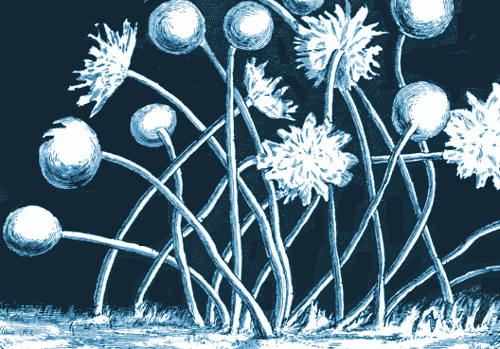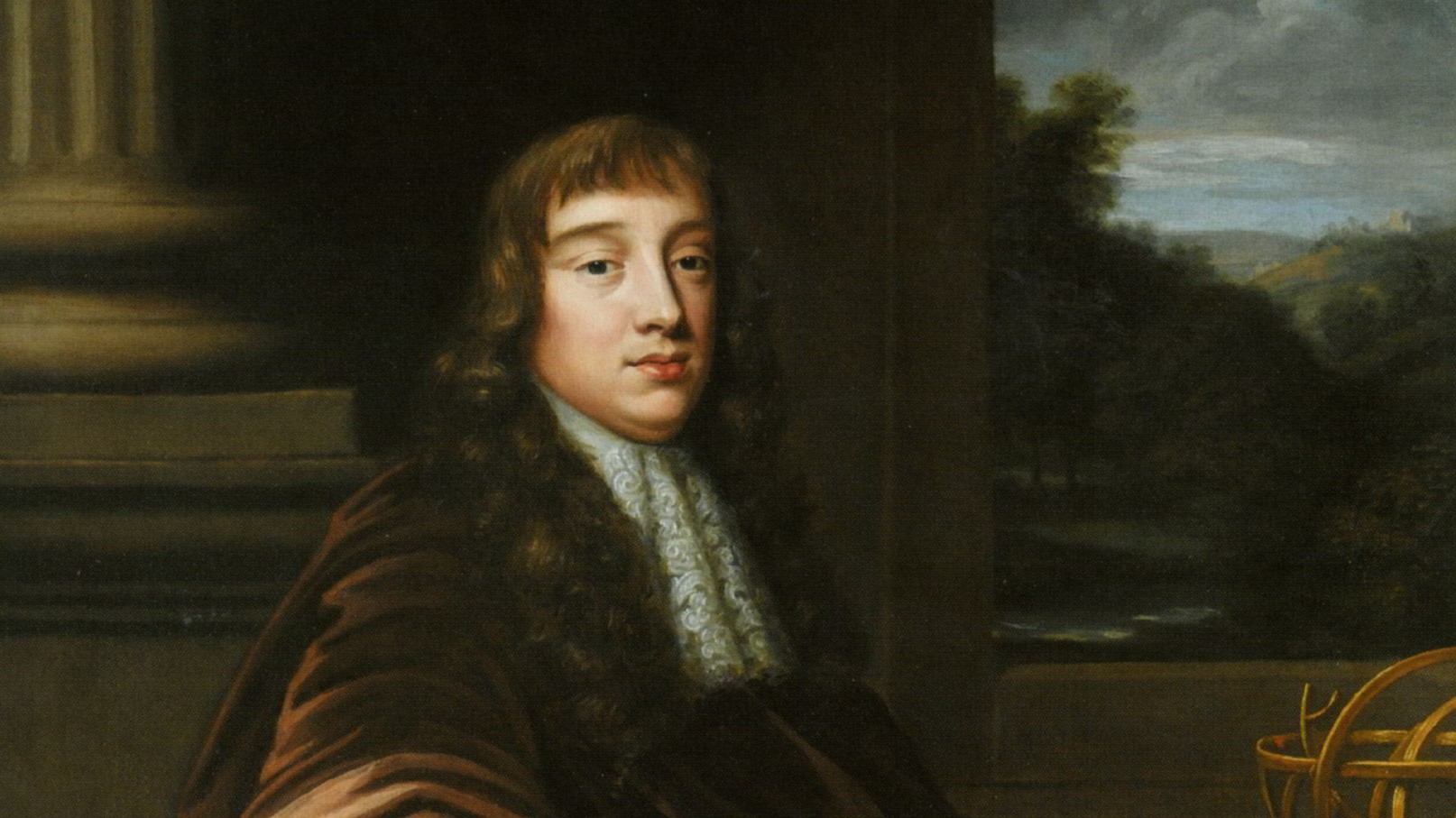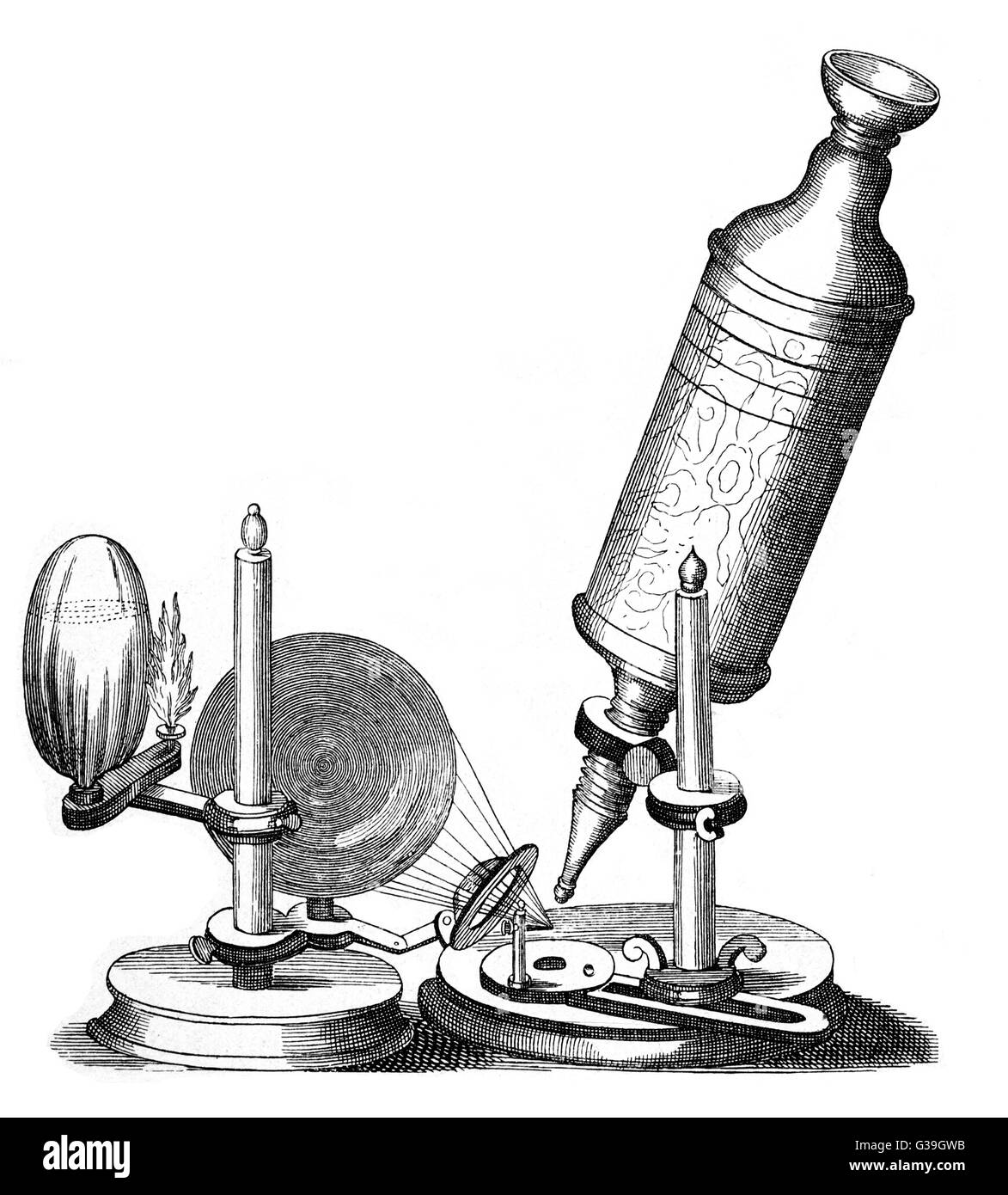Robert Hooke: The Uncelebrated Genius of the Scientific Revolution
The history of science is adorned with names that have become synonymous with groundbreaking discoveries and revolutionizing our understanding of the natural world. However, amidst luminaries like Isaac Newton and Galileo Galilei, Robert Hooke remains a somewhat obscure figure—a true scientific genius whose contributions laid foundational stones for modern science yet did not receive the recognition they richly deserve during his own lifetime or, in many instances, even today.
A Glimpse into Hooke's Early Life
Robert Hooke was born on July 18, 1635, in the small village of Freshwater on the Isle of Wight, England. His father, John Hooke, was a clergyman of the Church of England, and his upbringing was steeped in academic learning and religious values. Despite suffering from frail health during his early years, Hooke displayed an insatiable curiosity and aptitude for mechanics and drawing—skills that would become instrumental in his future endeavors. The death of his father when Hooke was just 13 marked a turning point, providing an inheritance that allowed him to move to London for further education.
Hooke's formal education began at Westminster School, where he was quickly recognized for his unmatched intellect. There, he formed friendships with some of the period's most influential thinkers, including Christopher Wren. He proceeded to Oxford University in 1653, where his academic journey truly flourished. At Oxford, Hooke's thirst for knowledge was nourished by interactions with pioneers of the burgeoning scientific community, eventually leading him to join the Royal Society as a gifted experimenter and technician.
Contributions to Natural Philosophy and Engineering
One of Hooke's most acclaimed works is his development and improvement of the compound microscope. His meticulous observations and illustrations of the microscopic world were published in his seminal book, "Micrographia," in 1665. The publication offered readers a glimpse into a world previously invisible to the naked eye, describing the structure of tiny organisms and inorganic materials in exquisite detail. It was within these pages that Hooke famously coined the term "cell" after observing the box-like structure of cork tissue, a discovery that would form the building blocks of cell theory, a cornerstone of biology.
Hooke's contributions extended beyond biology, etching into the annals of physics and engineering with his eponymous Hooke’s Law. This law, which he first stated in 1676, describes the proportional relationship between the force needed to extend or compress a spring and the distance it is stretched. Hooke’s Law not only emerged as a fundamental principle of mechanics but also laid critical groundwork for materials science and structural engineering disciplines. The elastic behavior of materials that Hooke so accurately described has applications that span from the design of bridges to the manufacture of everyday objects.
Intriguingly, Hooke's ability to straddle a diverse array of scientific fields also led him to architecture. As the city of London rose from the ashes of the Great Fire of 1666, Hooke collaborated with his old schoolmate, Christopher Wren, in rebuilding key structures, including the iconic St. Paul's Cathedral and the Monument to the Great Fire of London. His aptitude for engineering innovation shone through in these projects, underscoring his versatility and pragmatic approach to problem-solving.
A Paradox of Recognition
Despite his vast contributions, Hooke's scientific achievements have often been overshadowed by his contemporaries, particularly Sir Isaac Newton. A rivalry that festered between the two giants of science did little to help Hooke’s standing. Their contentious dispute over the nature of light and gravity led to years of adversity, exacerbating Hooke's eclipse by Newton's towering reputation and resulting in a legacy marred by acrimony.
Moreover, much of Hooke's work was published under the auspices of the Royal Society, which often led to him receiving less individual credit. The lack of lasting recognition for Hooke might also be attributed to his own elusive character. Known to be irascible and contentious, Hooke’s personality might have been an impediment within the social context of his time, limiting his posthumous fame compared to his more diplomatically adept peers.
In examining Robert Hooke's life and work, it is abundantly clear that he was a prodigious intellect whose contributions across multiple scientific domains warranted more recognition than he received. Today, the scientific community is gradually rekindling the intrigue and appreciation for Hooke's achievements—a testament to the idea that the measure of genius at times transcends the plaudits afforded by historical narrative. As we delve deeper into his life and legacy, it becomes increasingly necessary to reevaluate how pioneers like Hooke are positioned within the broader tapestry of scientific evolution. Stay tuned for the next installment as we explore further facets of Hooke's extraordinary, though understated, impact on the world.
The Ingenious Experiments and Inventions of Robert Hooke
While Robert Hooke's early career set the foundation for his revolutionary work in microscopy and mechanics, his portfolio of scientific inquiry and invention only expanded as he continued to explore the natural world with relentless curiosity. Hooke's unique talent for designing and executing intricate experiments allowed him to unravel mysteries of science that had perplexed thinkers for centuries, securing his legacy as one of the most versatile figures of the Scientific Revolution.
One of Hooke's major investigative pursuits was in the field of astronomy. Although primarily renowned for his terrestrial inventions and observations, Hooke harbored a keen interest in celestial phenomena. Demonstrating his knack for innovation, he developed techniques to improve the accuracy of telescopic observations, including the Hooke's universal joint, an early gimbal mechanism. By stabilizing telescopes with this gadget, he increased their efficacy in tracking celestial bodies, allowing astronomers to gather more precise data. Hooke's astronomical ambitions saw him attempt to determine the accurate position of the stars and the orbital mechanics of planets, laying groundwork upon which future astronomers could build.
An intriguing anecdote from Hooke's life is his involvement in a speculative attempt to measure the Earth's distance from the fixed stars. Hooke devised an experiment in 1669 to measure the parallax of a star, a concept only successfully executed after his time, but indicative of his forward-thinking approach. This experiment exemplifies his prowess in conceptualizing innovative methodologies, even if the technological capabilities of his era were not always sufficient for such ambitious undertakings.
Hooke also played an instrumental role in the dawning of meteorology as a scientific discipline. Fascinated by the weather and its underlying processes, he pioneered early meteorological instruments, such as the anemometer, to measure wind speed, and an improved portable barometer. His comprehensive weather diaries detailed precise atmospheric observations which, while primarily undervalued during his time, proved valuable in laying the groundwork for systematic weather forecasting.
But perhaps one of Hooke's most intriguing and sometimes misunderstood contributions lay in the field of geology and paleontology. Hooke was one of the first scientists to suggest that fossils were the remains of living organisms from the past—an assertion that challenged the then-dominant religious interpretations of the Earth's history. Through meticulous examination of fossils, he hypothesized that some geologic formations resulted from long-term and gradual processes; ideas that aligned with what would later become the theory of deep time, foundational to modern geology.
Hooke and the Philosophical Discourse of His Time
Robert Hooke's life was rich with dialogue and debate during an era when scientific exploration was synonymous with philosophical inquiry. As a member of the Royal Society, Hooke regularly engaged with many of the leading minds of his age. The Society, established in 1660, was a congregation of intellectuals charged with promoting exploration through experiments and shared knowledge. Hooke, as its first Curator of Experiments, was pivotal in orchestrating and conducting live experiments designed to elucidate natural phenomena before his contemporaries.
Yet, despite this prestigious role, Hooke often found himself at intellectual odds with peers, notably Isaac Newton. Their infamous discord over the nature of gravity, light, and colors forms a well-documented chapter in the history of science. Hooke claimed that Newton had borrowed some of his ideas about gravity and optics without proper acknowledgment—a contention that Newton adeptly sidestepped. The competition between these two towering intellects resulted in sharp exchanges and an ideological divide that persisted throughout their careers.
The philosophical debates of Hooke’s time extended beyond personal rivalries and touched upon the broad implications of scientific discovery. Ethical considerations, the nature of observation, and validation of knowledge were at the forefront of the intellectual exchanges amongst scientists, and Hooke was never one to shy away from these discussions. His work often challenged the dogmas of traditional academia, which, in some cases, branded him as controversial. Nevertheless, these confrontations only helped spur scientific discourse and progress, marking an era where experimentation began to profoundly transform theoretical philosophy into empirical science.
Legacy and Recognition in Modern Context
Despite the relative obscurity that shrouded his name posthumously, the tide of recognition for Robert Hooke’s contributions has slowly turned in recent decades. Historical reassessments of his work have illuminated just how far ahead of his time he truly was—an inventor and scientist capable of gazing beyond the limitations of his contemporaries, both in terms of vision and imagination.
Institutions and historians have gradually sought to right the oversight by granting Hooke the credit he merits. Universities, public exhibitions, and academic conferences frequently recount his explorations as a testament to his scientific genius. With numerous inventions and theoretical contributions that have become integral to fields ranging from microbiology to physics, Hooke’s legacy is now appreciating the renaissance it deserves.
As we continue our exploration of Hooke's narrative, we venture into the revolutions in thought that his life inspired and the principles that underpin modern scientific inquiry. In understanding the transitions sparked by Hooke's inquisitive mind, we not only honor his memory but also glean insights into the essence of scientific discovery—an endeavor marked by relentless curiosity, resilience, and an unwavering commitment to uncovering truth beyond face value. Join us as we delve deeper into Hooke's influence in the fabric of scientific history.
The Genius Behind Hooke’s Scientific Instruments
Robert Hooke’s legacy is deeply intertwined with his ingenuity in designing scientific instruments and mechanisms that greatly advanced the capabilities of researchers in the 17th century and beyond. His unyielding drive to explore and quantify natural phenomena led to the invention and refinement of various tools that acquired meanings far greater than their initial design purposes.
Perhaps most notable among Hooke’s contributions to scientific instrumentation is the air pump, which he co-developed with Robert Boyle. This invention was crucial in conducting experimental work on gases and vacuums, leading to the formulation of Boyle’s Law, which outlines the inverse relationship between the pressure and volume of a gas. Hooke’s meticulous craftsmanship ensured the air pump could create a near-complete vacuum, enabling experiments that showcased the effects of reduced air pressure on different substances and organisms. This work not only revolutionized study into pneumatics but also laid the groundwork for modern chemistry and physics.
In addition to his work on the air pump, Hooke is credited with significant advances in horology—the science of measuring time. He designed the anchor escapement, a critical mechanism that improved the precision of pendulum clocks, transforming them into reliable instruments for accurate timekeeping. These developments were pivotal in an era reliant on precision in navigation and astronomy, emphasizing Hooke’s intuition for practical applications of his designs. Notably, his innovations significantly influenced John Harrison in developing marine chronometers that revolutionized sea navigation by allowing sailors to accurately determine longitude.
In the realm of optics, Hooke's contributions were equally profound. His work on the Gregorian telescope, which he refined, allowed for sharper and clearer observational capabilities. By addressing crucial issues such as spherical and chromatic aberration, Hooke's insights made telescopic systems more effective and accessible, paving the way for future discoveries in astronomy and optics.
Hooke's Concept of a Universal Cell Structure
Hooke's pioneering work in microscopy did more than just introduce the term "cell"; it sowed the seeds for a profound shift in biological sciences. By examining cork cells and plant tissues, Hooke proposed the idea that the cell was the basic structural unit of life. Although his interpretation was more rooted in visual than biological understanding, it laid the earliest framework for future exploration into cellular biology and differentiated this field from metaphysical explanations of life's structures.
The implications of Hooke’s cellular observations gathered momentum as microscopy advanced, positioning the study of life at a microscopic level beyond Hooke's original assessments. This microcosmic view ushered in a paradigm in which biological processes could be explored in terms of cellular interactions, a shift that forever altered our understanding of organisms. The very notion that such complex life forms could arise from such simple units challenged existing beliefs and called for a reevaluation of life's underlying mechanics—a testament to Hooke’s enduring influence.
Resurrecting Hooke's Impact on Modern Science
To contemporary scientists and historians, Robert Hooke's legacy is a tapestry of discovery that weaves through numerous scientific disciplines. As modern science continues to develop upon the legacy of early innovators, it is increasingly apparent that Hooke's contributions were instrumental in forming the bedrock of experimental research and methodology.
Today, we recognize Hooke not just for his numerous discoveries and inventions, but also for his fundamental approach to scientific inquiry. His relentless curiosity and rigorous experimentation forged pathways for future generations of scientists, embodying the spirit of empirical research that drives today's scientific advances.
Efforts to honor Robert Hooke have proliferated, driven by the desire to ensure this once-overlooked icon receives the recognition he justly deserves. Public engagements, documentaries, and media shed light on Hooke’s journey and highlight his role as a heroic figure in the story of science. Academic publications and biographies draw upon his extensive body of work, celebrating his imagination and dedication as essential to the progress of human knowledge.
In delving into Robert Hooke's legacy, we find motivation to pursue the unknown with fervor and ingenuity—qualities Hooke personified. His work teaches us that observation and innovation are vital companions on the quest for discovery, and that hidden within every mystery are the boundless opportunities for understanding.
As history casts a more accommodating light on Hooke, we find in his story an inspiring illustration of the power of scientific inquiry and the enduring impact of those who, though overshadowed in their lifetime, move the world forward through their ceaseless quest for knowledge. May Hooke’s legacy continue to inspire present and future generations to push beyond the boundaries of the known world, echoing his timeless contributions to the unending journey of science.











Comments